- Secondary care >
- Oncology >
- Implantable port
Implantable ports
{{product.productLabel}} {{product.model}}
{{#if product.featureValues}}{{product.productPrice.formattedPrice}} {{#if product.productPrice.priceType === "PRICE_RANGE" }} - {{product.productPrice.formattedPriceMax}} {{/if}}
{{#each product.specData:i}}
{{name}}: {{value}}
{{#i!=(product.specData.length-1)}}
{{/end}}
{{/each}}
{{{product.idpText}}}
{{product.productLabel}} {{product.model}}
{{#if product.featureValues}}{{product.productPrice.formattedPrice}} {{#if product.productPrice.priceType === "PRICE_RANGE" }} - {{product.productPrice.formattedPriceMax}} {{/if}}
{{#each product.specData:i}}
{{name}}: {{value}}
{{#i!=(product.specData.length-1)}}
{{/end}}
{{/each}}
{{{product.idpText}}}

Celsite® PSU Access ports for mid to long-term venous applications Celsite® PSU Access Port Systems are indicated for any condition that requires mid to long-term intermittent or continuous venous ...
Aesculap®

Celsite® Epoxy Premium venous access ports with special compact port design Celsite® Epoxy Access Port Systems are indicated for any condition that requires mid to long-term intermittent ...
Aesculap®

Celsite® Implantofix® Standard venous access ports with screw clamp catheter connection Celsite® Implantofix® Access Port Systems are indicated for any condition that requires mid to long-term intermittent ...
Aesculap®

TITAN-PORT D (dialysis) is a fully implantable venous port catheter system as an access option for performing veno-venous dialysis. There are 2 different systems available in complete ...
PakuMed Medical Products

TITAN-PORT APH (exctracorporeal apheresis) is a fully implantable port catheter system providing an access facility for performing extracorporeal apheresis. The set contains a titanium ...
PakuMed Medical Products
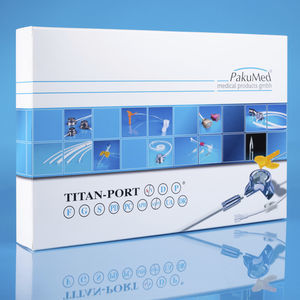
... punch defects. Technical failures excluded » Safety increased. The TITAN-PORT G System is a totally implantable port catheter system consisting of an injection chamber (port), ...
PakuMed Medical Products
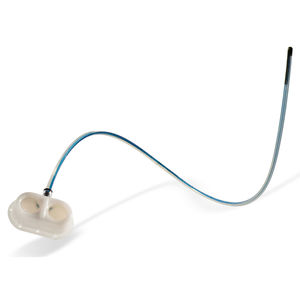
M.R.I.® Dual-Lumen Implantable Port Ports (Non-Power) Features: Large dual silicone septa Ideal for M.R.I. or radiation therapy Plastic construction Exclusive Septum-Finder® ridge
Bard Medical

Lightweight for patient comfortEasily identifiablePower injectableTitanium port body
Bard Access Systems

The SmartPort+ implantable port is the latest in implantable port innovation from AngioDynamics and combines two of our best-in-class technologies, Vortex and Endexo, ...
Angiodynamics

Weight (g) :14 Height x base (mm) :12 x 30 ø puncture (mm) :13 Residual Volume (ml) :0,5
Districlass médical

Soph-A-Port® is designed to ensure safety and comfort for patients thanks to: Ergonomic shape 2 sizes – Pediatric and Adults Silicone septum 3 suture holes Exclusive self-locking system Venous Access Venous ...
Sophysa
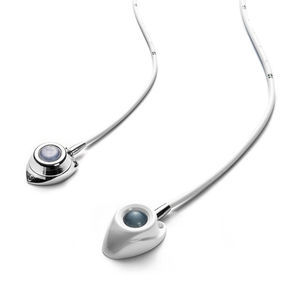
Implantable PORT systems have implantable titanium and polysulfone chambers, with silicone catheters and 300 psi PUR POWER, compatible with all the taxanes and taxoteres chemotherapy ...
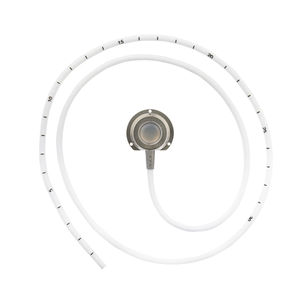
... INFU-KT is a complete implantable access system for patients who require repeated delivery of cancer chemotherapy agents, parenteral nutrition, antibiotics, blood products and for blood sampling. A Complete Range of ...
F.B. Medical

... pressure injections for CT scan polysite size procedures Titanium and Polyoxymethylene ports Hybrid ports : Titanium & POM (polyoxymethylene) 3 sizes of port to meet the diverse needs
Perouse Medical

Vaxcel® Implantable Ports Vaxcel® Implantable Ports is a thin, soft, plastic tube that is put into a vein in your chest or arm and has an opening (port) ...
Navilyst Medical

... indicated for treatment with vasoactive or irritant drugs. Description Titanium port, with embossed silicone septum, to facilitate its location Low profile port. Greater comfort and less risk for ...
Your suggestions for improvement:
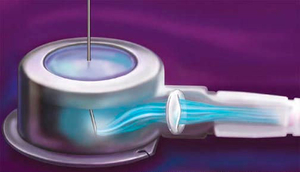
An implantable port is placed beneath a patient's skin to facilitate the repetitive administration of pharmaceutical products.
ApplicationsThese devices are useful for chemotherapy and other patients requiring frequent injections or sampling of bodily fluids. They help avoid the pain of repeated skin punctures. Most provide access to the circulatory system via a catheter. However, intrathecal versions offer a way to inject pain control medication into the cerebrospinal fluid around the spinal cord for palliative care.
TechnologiesCeramics, plastic, silicone, resin, titanium and other materials are used to fabricate such implants. Each offers different flexibility and strength characteristics.
How to chooseChoice will depend on the anticipated length of use, area of implantation and the impact on patient comfort.
the best suppliers
Subscribe to our newsletter
Receive monthly updates on this section.
Please refer to our Privacy Policy for details on how MedicalExpo processes your personal data.
- Brand list
- Manufacturer account
- Buyer account
- Our services
- Newsletter subscription
- About VirtualExpo Group














Please specify:
Help us improve:
remaining